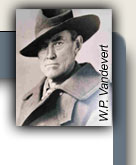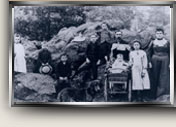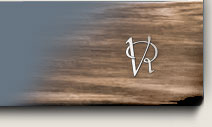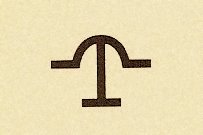
The Hashknife Brand
The Vandeverts branded their cattle with a Hashknife design. Bill Vandevert had used the brand earlier when he was a range foreman for the Aztec Land and Cattle Company in Texas and Arizona. The Aztec Company was famously known as "The Hashknife Outfit" because of the brand.
The Hashknife brand originated in Weatherford, Texas, in the 1870’s. The design was taken from the knives used by cattle camp
cooks to cut beef and vegetables into cubes to
make hash. The blade was a 180 degree curve with tails on the ends
of it. A straight shaft connected the middle of the blade to a
handle so the cook could rock the
blade back and forth easily. A major advantage of using this design for a brand was that it was difficult
for rustlers to superimpose another brand on top of it.
By
the mid 80’s the nation was swept up with the romance of cattle and
cowboys. Back in New York City, a Bostonian named Edward Kinsley and
some other men founded Aztec Land and Cattle Company in 1884.
The company bought a million acres in Arizona and New Mexico from
the newly built Atlantic and Pacific Railroad. The Aztec Company bought Texas
cattle and the brand with them. It
took four hundred railroad cars to bring the cattle to Arizona. The
cars were unloaded all along the line from the New Mexico state line
to Flagstaff. Aztec had become the third largest cattle company in
North America and was known as “the Hashknife Outfit”.
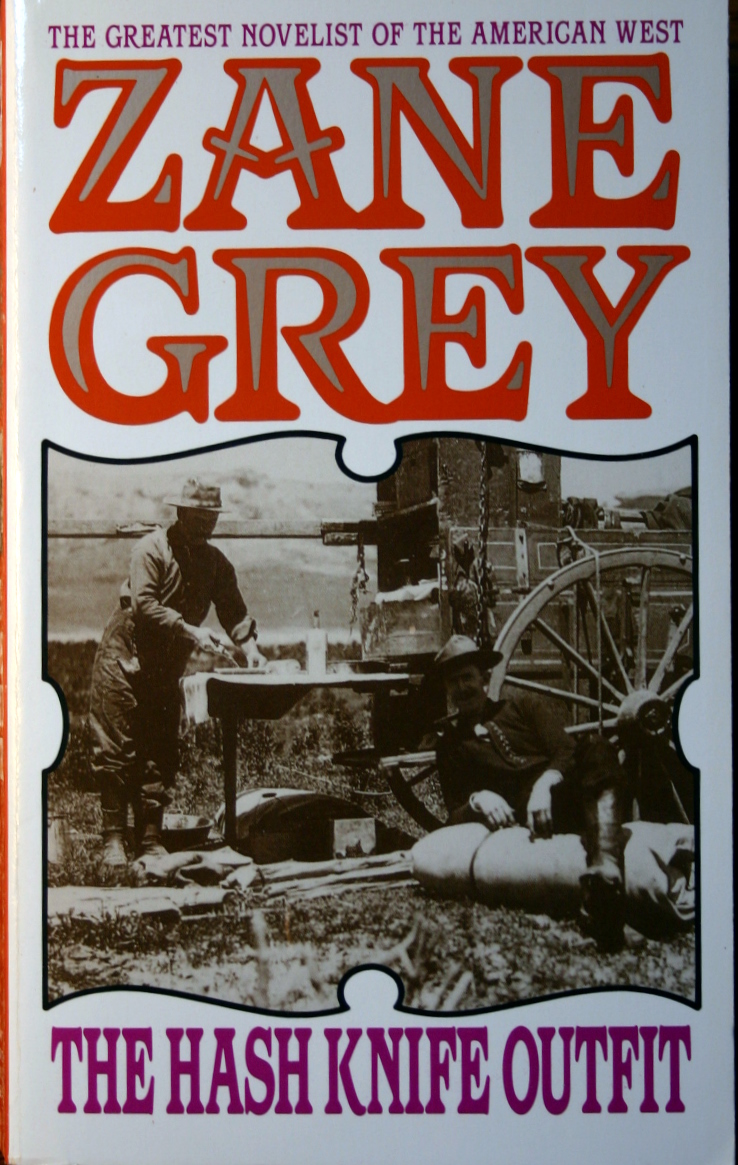 Zane Grey, the prolific western novelist, immortalized
the roughness of Northern Arizona cattle ranching in his book, The Hash Knife Outfit, published in 1933. In the
book, however, the Hash Knife Outfit, led by Jed Stone, was a band
of outlaw cattle rustlers.
Zane Grey, the prolific western novelist, immortalized
the roughness of Northern Arizona cattle ranching in his book, The Hash Knife Outfit, published in 1933. In the
book, however, the Hash Knife Outfit, led by Jed Stone, was a band
of outlaw cattle rustlers.
Aztec put the brand, with the blade pointing up, always on the left side of the cow's ribcage and then either on the left hip or on the right side of the ribcage. Branding on both sides of the ribcage made for more work at branding time but Aztec seemed to feel this would help deter rustlers. With the vast lands and spread-out herds, rustling was a popular occupation
in Northern Arizona. One outlaw, who obviously didn’t have a heart
for the cattle, cut the brand off entirely and sewed the skin back
together.
Grace Vandevert McNellis, Bill Vandevert's grandaughter, reports, "I've read lots of stories about brands over the years - how some were so easy to change after being applied to the steer - by adding another brand on top! Then they would steal the cattle. Don't think the ranch ever lost any that way - at least I never heard of it. Our branding was done at the corral by the barn. I sat on the top log and watched the whole thing. There were always extra hands working and was fun. I was torn over the iron being so hot when it hit the hide of a yearling - but Dad would calm me down and say it was necessary and that it didn't hurt them but for a minute."
Gracie's brother Claude says, "Our brand was on the left side about midway between the front and back legs. Also, I think it was the heifer's right (could have been the left) ear that was underbitted, simply to make it easier to identify them when separating them from the steers".
By the end of 1887 Aztec imported between 33,000 and 40,000
cattle that grew into a herd of 60,000. But Kinsley had judged
Northern Arizona from a train window in one of the greenest summers
the territory had ever experienced. The next thirteen
years saw exceptional droughts, overgrazing, falling cattle
prices, rustling, and starving cattle.
Overgrazing continued well into the twentieth century, resulting
in erosion and the replacement of grasslands with bare land, grasses
unpalatable to cattle, snakeweed, and juniper. Juniper germinates
only after the seeds have passed through an animal. Cattle and sheep
therefore help juniper germinate while eating the grasses that keep
juniper from growing once it has germinated. Even today, the land
around the Little Colorado River in northern Arizona will only
support one-third to one-half the number of animals, domestic and
wild, that it supported before 1880.
In the late 1880’s Aztec probably still looked like a promising
enterprise. Bill Vandevert, brought his wife, Sadie, and their
first three children to live in Holbrook, Arizona (Aztec
headquarters) while he worked for the company as a mail courier and
range rider. Two more of their children, Clint and George, were
born in Holbrook. Bill wasn’t a “cowboy” in the traditional sense
because he didn’t work with the cattle every day. He took the
cattle to the range and brought them back. When Bill and Sadie left
Arizona it may have been partly because Bill could foresee Aztec’s
bleak future. Aztec collapsed as a cattle operation and was widely reported to be bankrupt. But the land increased in value and bailed the company out. Aztec exists to this day and still owns a quarter of a million acres in Arizona.
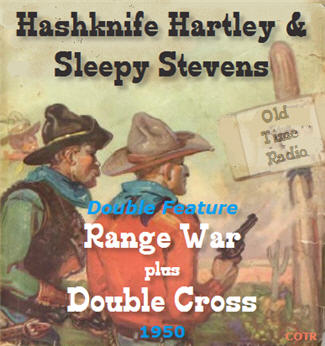 In 1950 W.C. Tuttle, a western writer, popularized "Hashknife Hartley" in a series of programs for Armed Forces Radio. Two of the programs are available for download.
In 1950 W.C. Tuttle, a western writer, popularized "Hashknife Hartley" in a series of programs for Armed Forces Radio. Two of the programs are available for download.
Grace Vandevert McNellis, writes, “We never
knew for sure why my grandparents left Arizona except family I've talked to
suggest Sadie was homesick to see her sister in New York City (Great
Aunt Mittye whose husband was a druggist in the city). The family
believes she was just plain tired of the chaos of the fights amongst
the sheep-men and cattlemen and whatever else there in Arizona. I
understand that she and Grampa would actually go out in the street
from their home and drag in the wounded men and doctor them. Didn't
matter which side they were on - - just did it! I'm sure Sadie, by
then, with five children, needed to get away from that kind of
atmosphere. She was raised a rather genteel lady in Kentucky and
I'll bet she never dreamed of ending up like that in Arizona. She
must have matured rather rapidly after marrying Grampa.
“They
actually left Arizona in 1889, or so, because they had Kathryn Grace
in New York on May 26, 1890, and they left there in 1891 when Sadie
was pregnant with my Dad, Claude. They arrived in Powell Butte,
Oregon, approximately December, 1891, and had my Dad in January
1892. It was always said that they only lived in New York for one
year – in Spring Valley, Rockland County.”
In 2011 the Vandevert Ranch Association re-acquired the rights to use the Hashknife brand in Oregon, this time for horses. No horses have yet been branded on the ranch but the ranch has acquired a Hashknife branding iron, shown below.


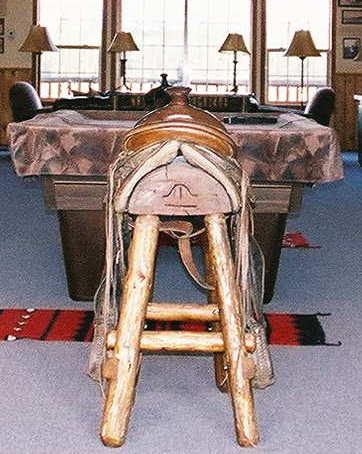 The
Hashknife name and brand appear in a variety of locations around Vandevert
Ranch, most prominently in Hashknife Road which bridges the Little Deschutes River and connects to the road to the barn.
The
Hashknife name and brand appear in a variety of locations around Vandevert
Ranch, most prominently in Hashknife Road which bridges the Little Deschutes River and connects to the road to the barn.

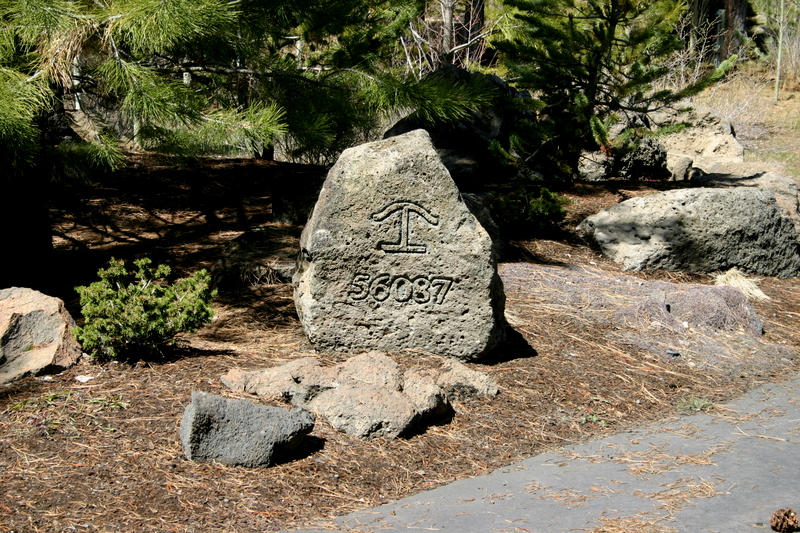
Sources for The Hashknife Brand:
Grace Vandevert McNellis
– family history related verbally and by E-mail.
Baeza, Jo –
Founding of Aztec Land and Cattle in Holbrook Tribune
News/The Winslow Mail Centennial Edition March 31, 1995.
Carlock, Robert H. - The Hashknife, The Early Days of the Aztec Land and Cattle Company, Limited, Westernlore Press, 1994
The
Handbook of Texas Online.
Abruzzi, W. S. The Social
and Ecological Consequences of Early Cattle Ranching in the Little
Colorado River Basin, 1995

